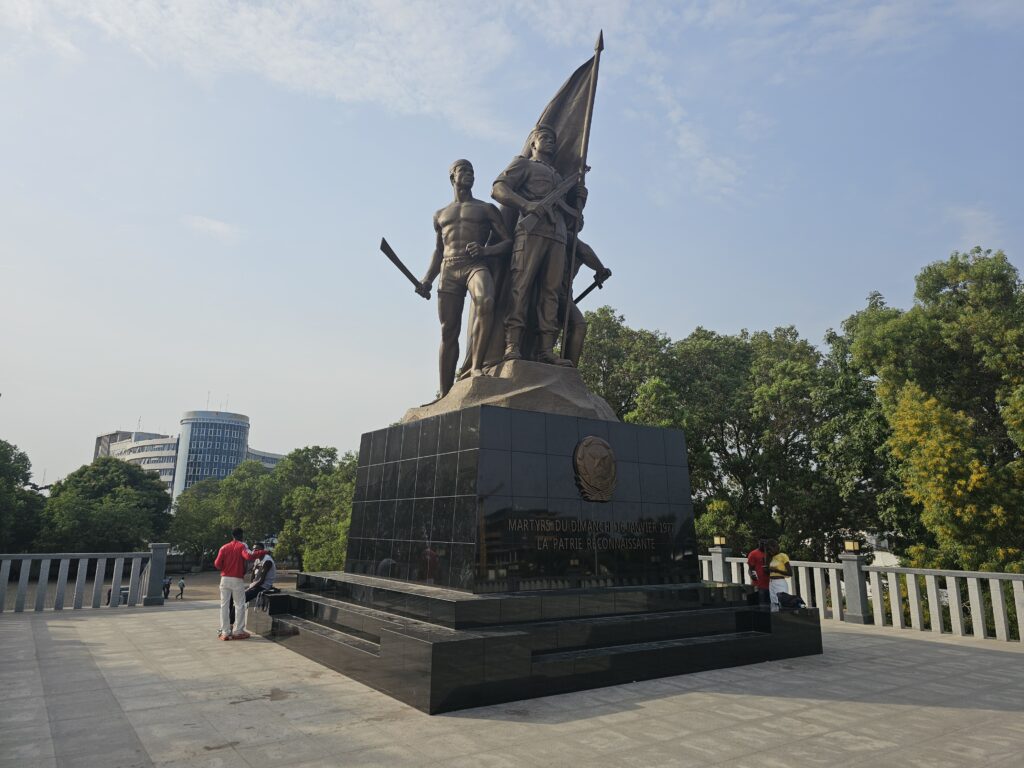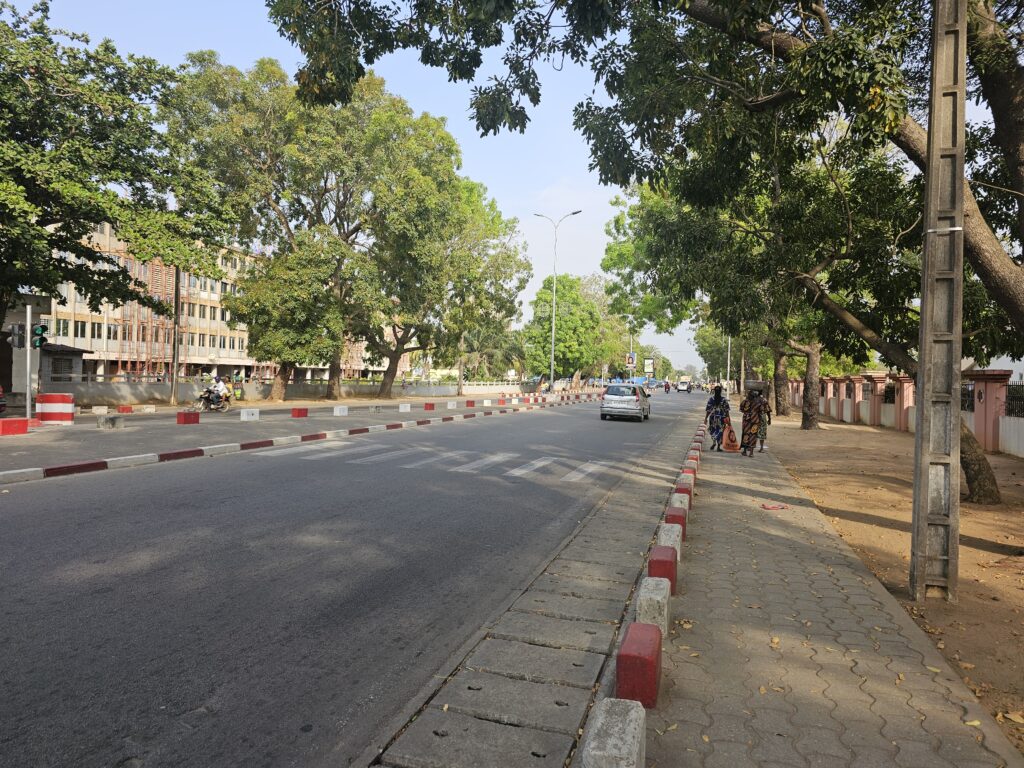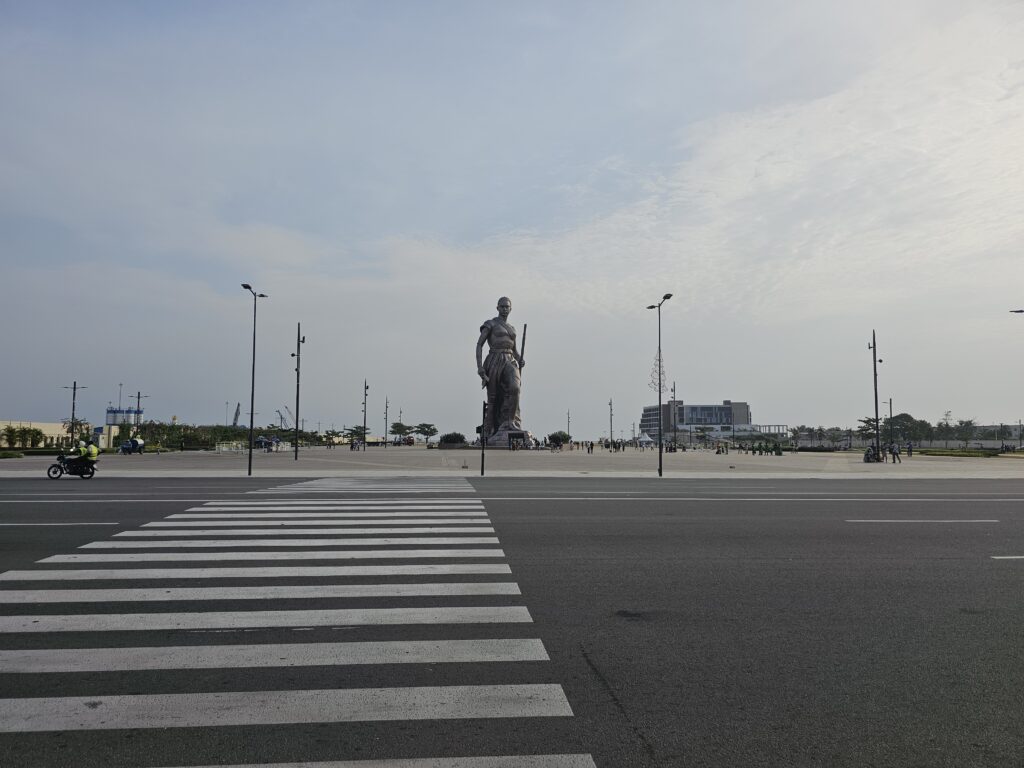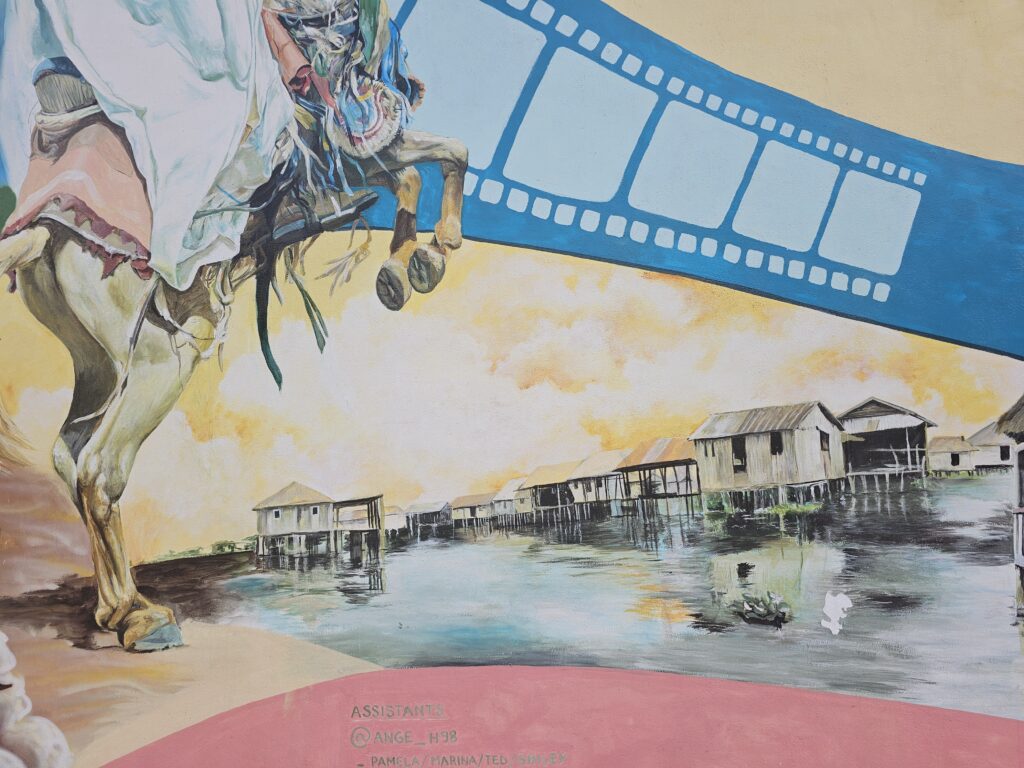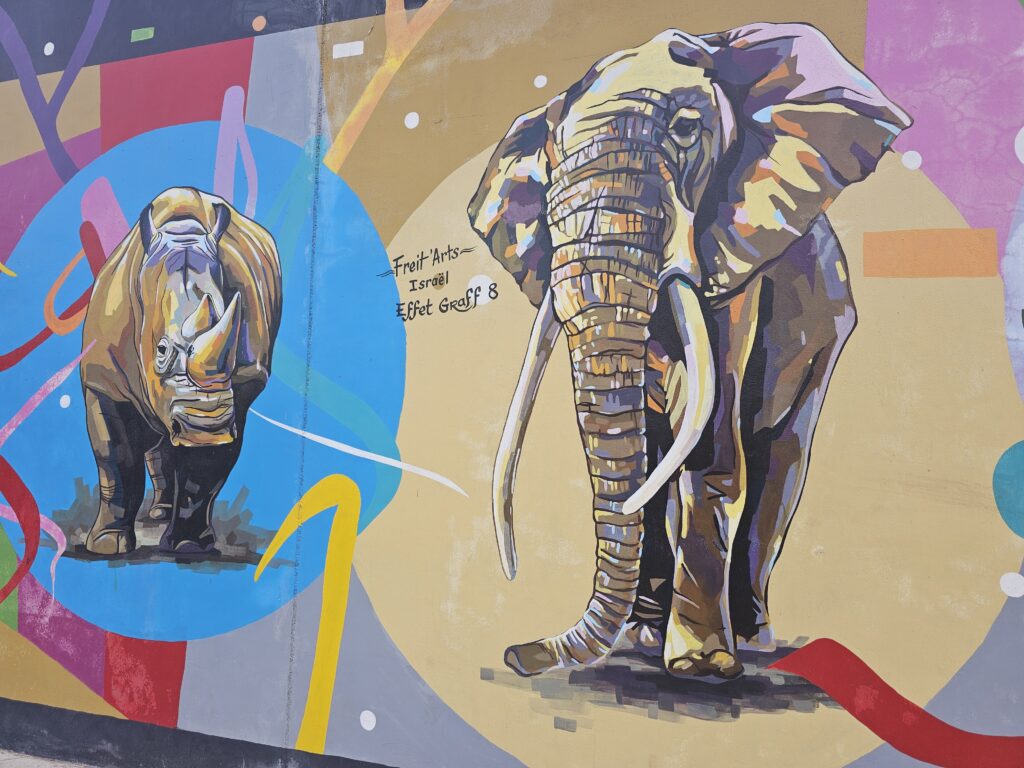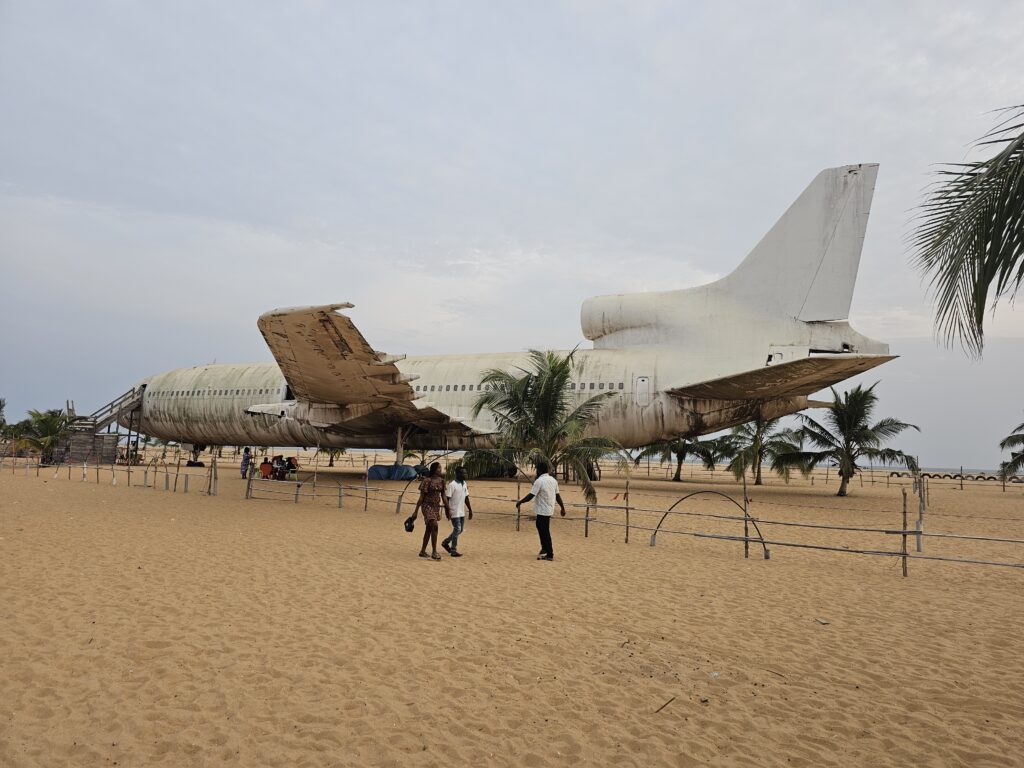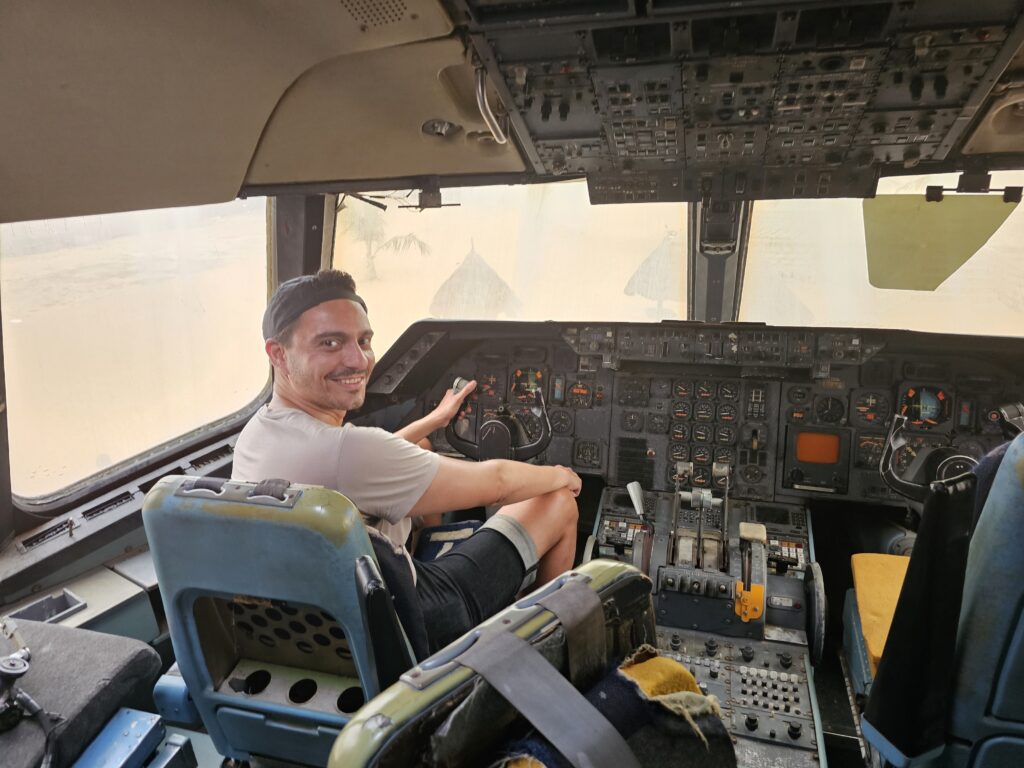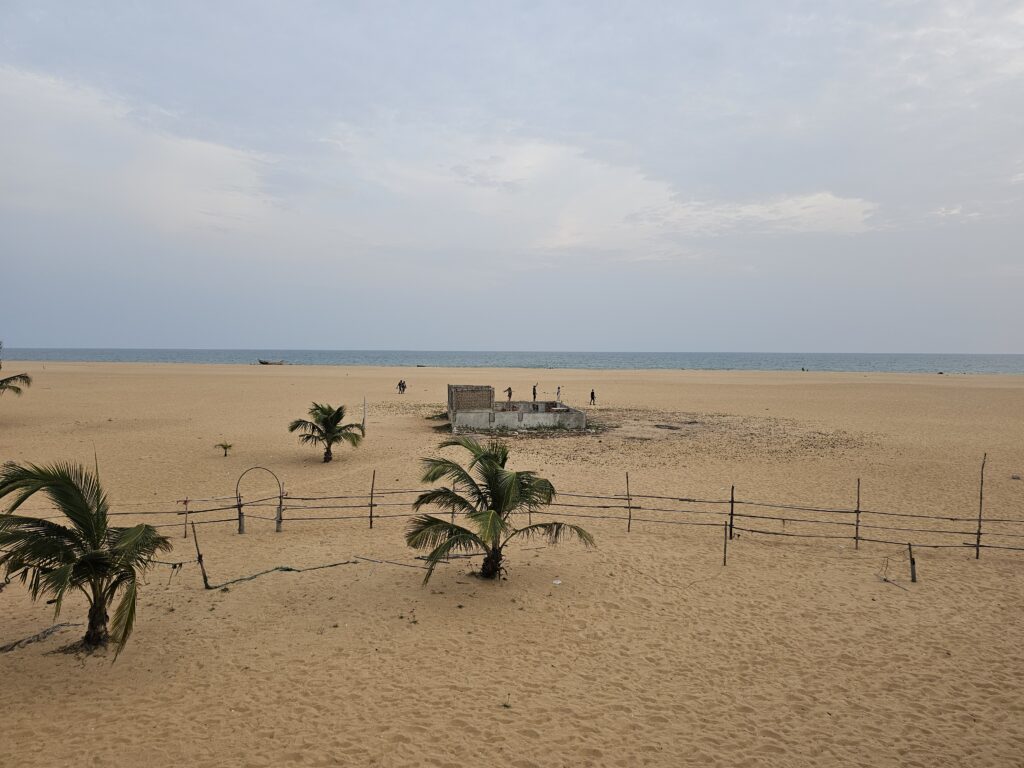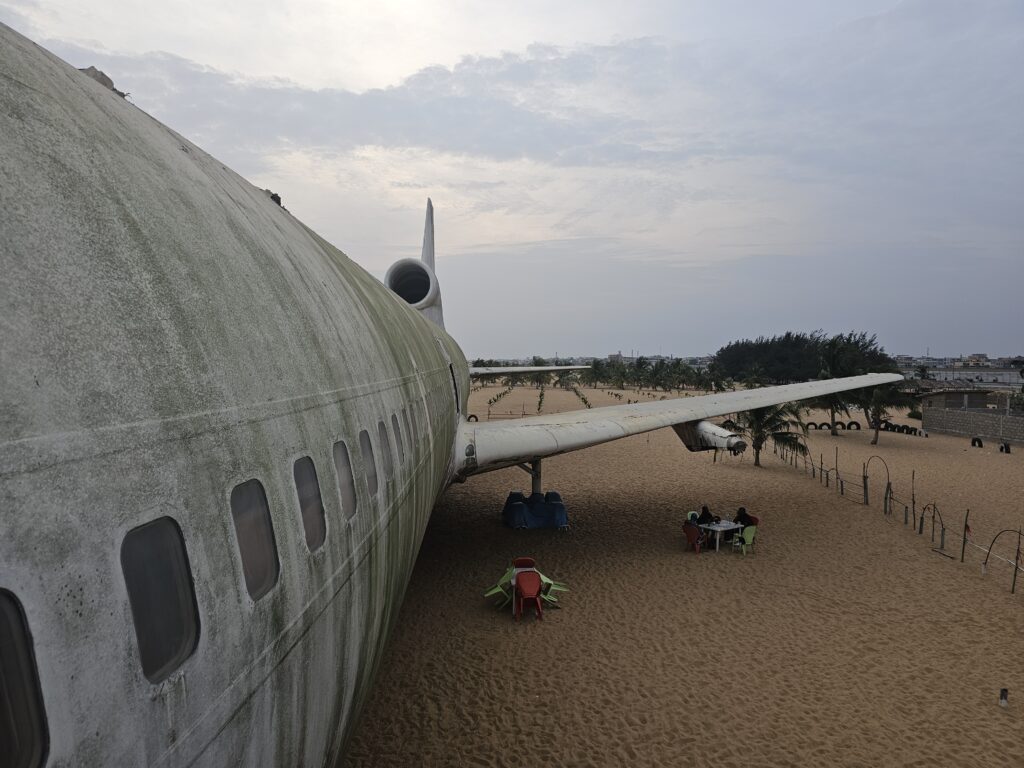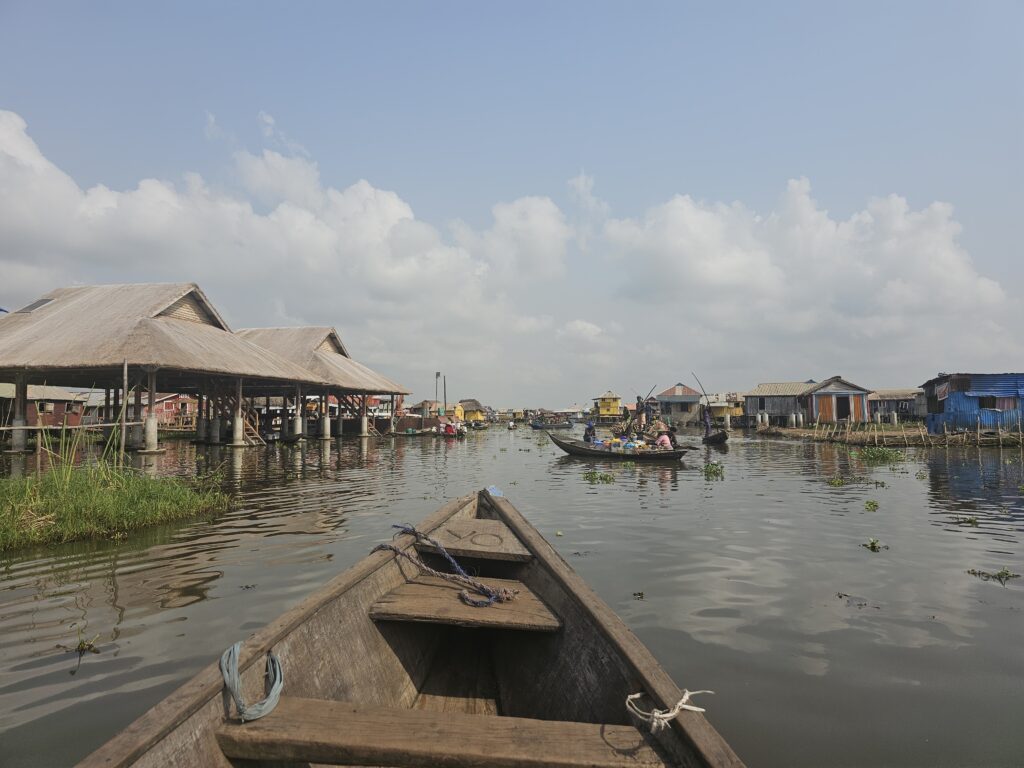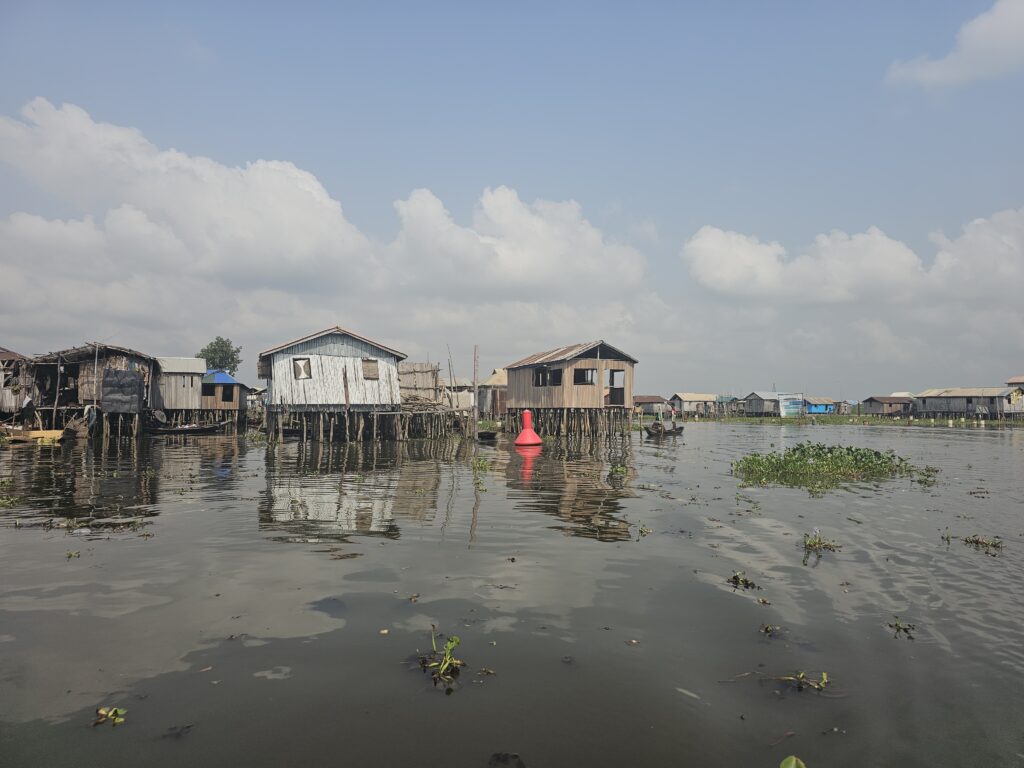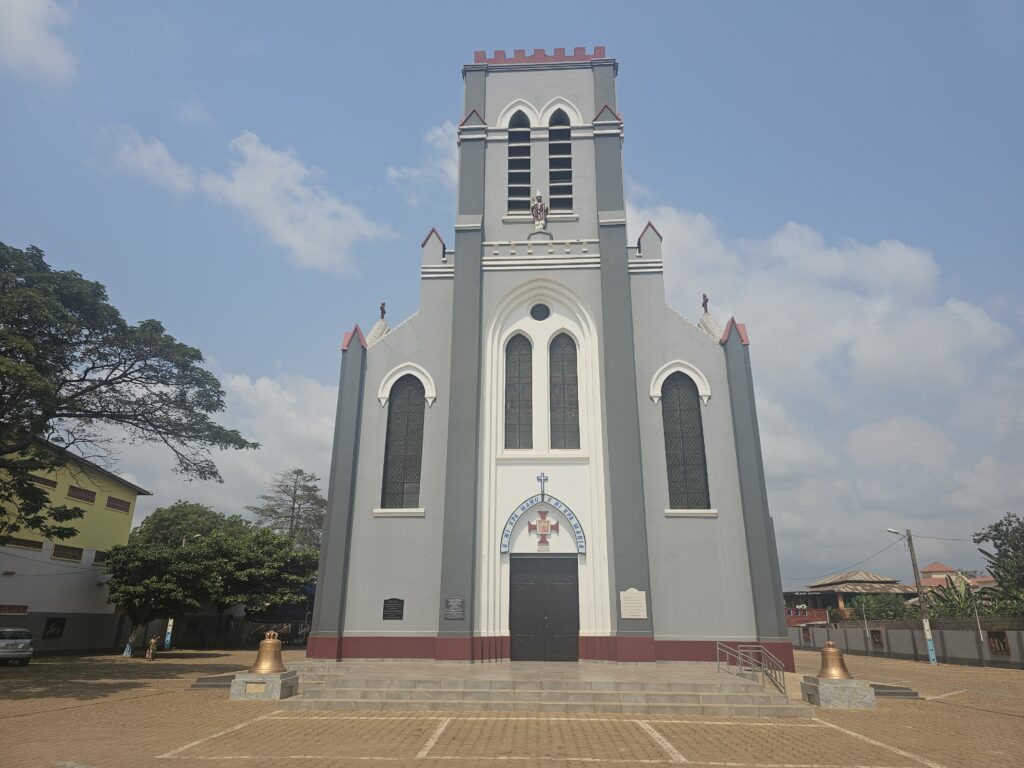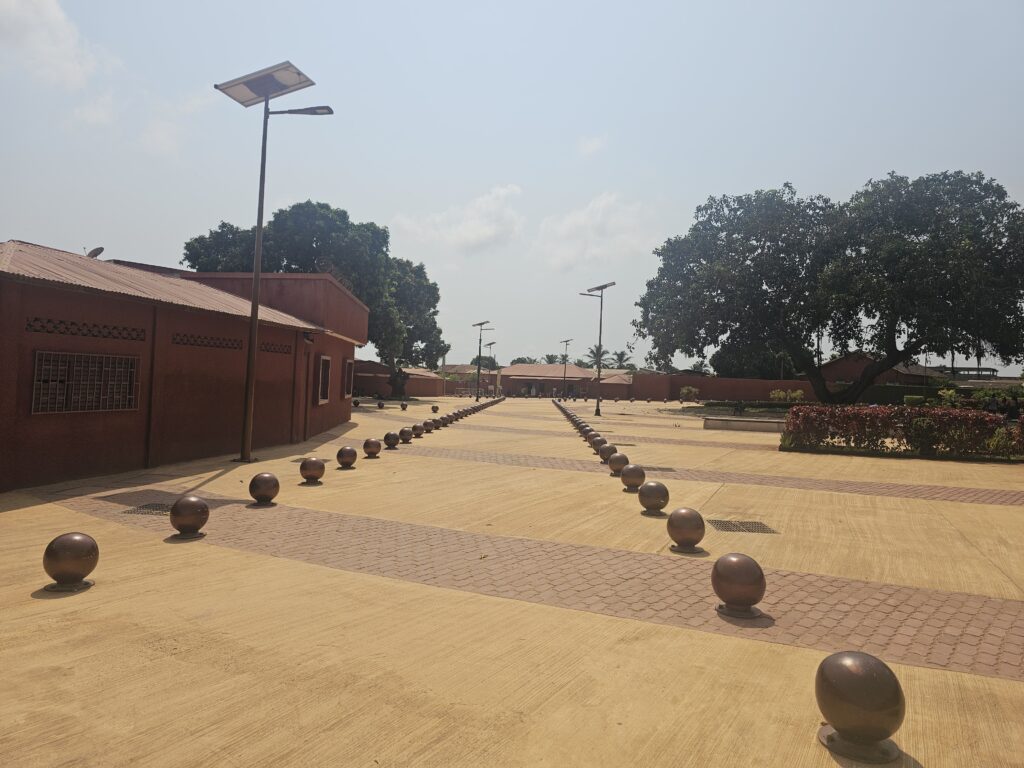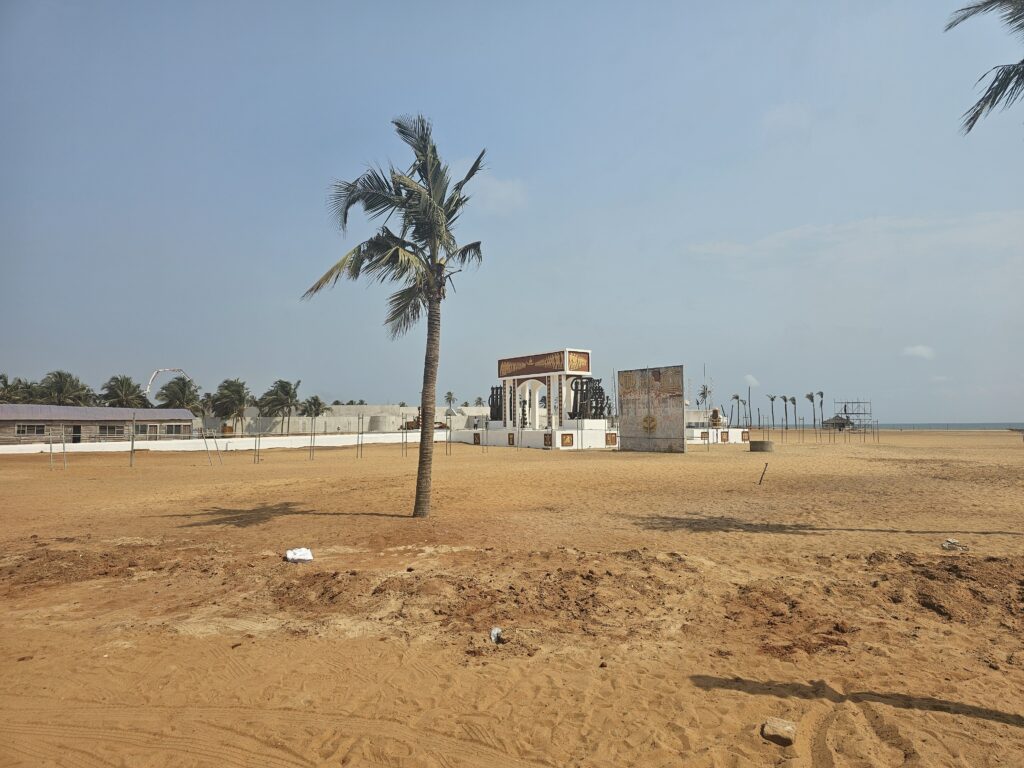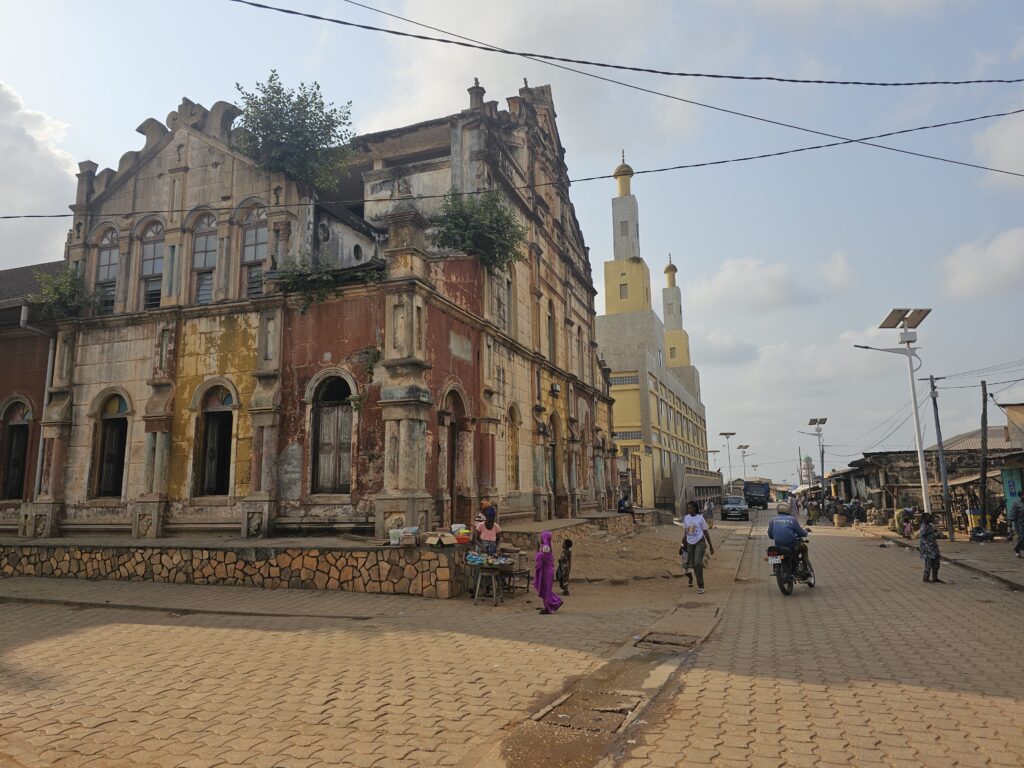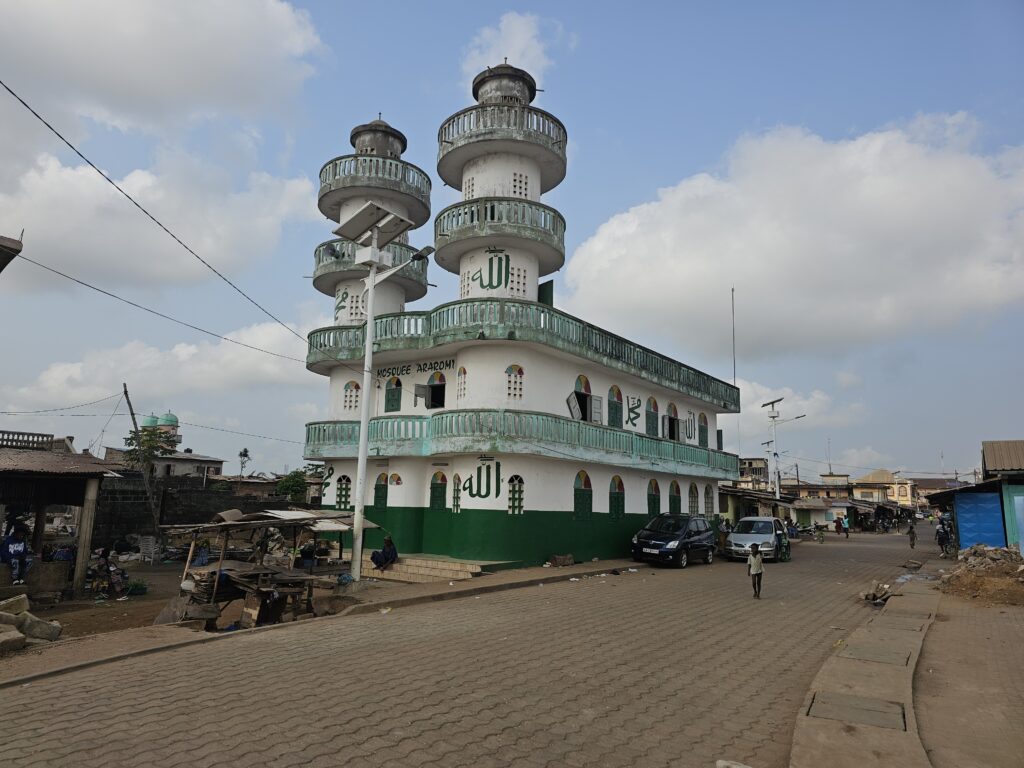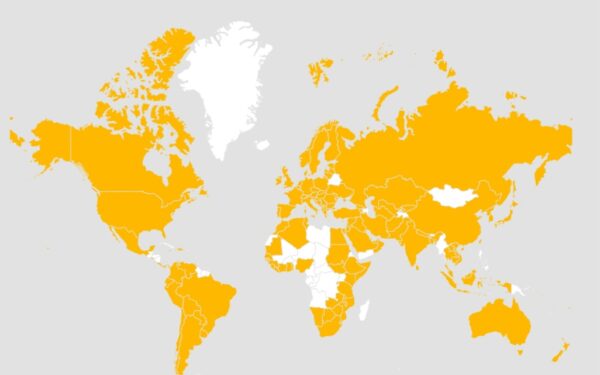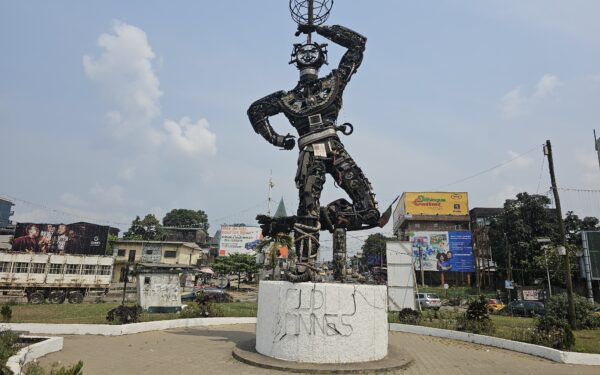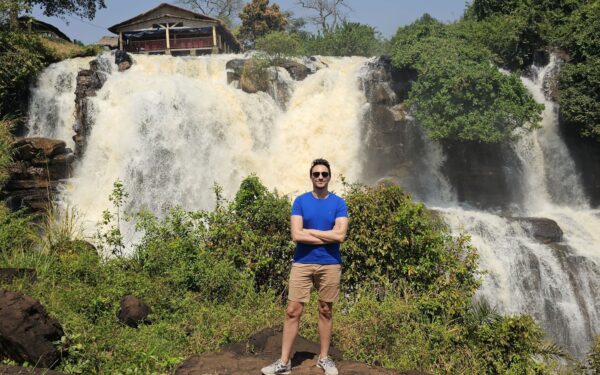Trip Report: Benin
Visited in January 2024
Sometimes you see things that somehow don’t fit the place you’re in. Like a polar bear in the Sahara, a shipwreck on a treetop or a McDonald’s restaurant in Tehran.
I had such a surreal experience when I landed in Benin, my country no. 165. What I saw in the immigration hall was an automated passport control, as you usually see in Europe or the USA/Canada. Although this automated passport control was for citizens of Benin only, I have never seen anything like this in sub-Saharan Africa. Not even in the more developed countries such as South Africa.
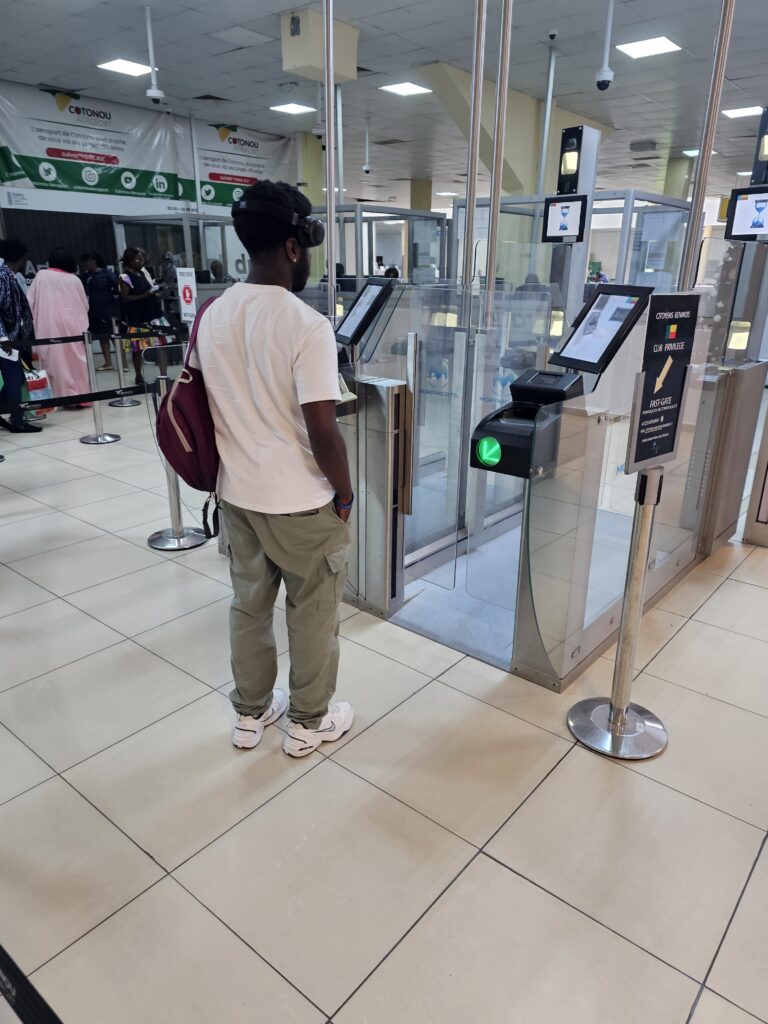
Most travelers will probably never see this high technological standard, as Benin is a country that you typically enter via the land border from Nigeria or Togo. Benin has a special outline that looks like a broccoli. A long, narrow stalk at the bottom and the flowering head at the top. It takes less than three hours to drive along the coast from the border with Nigeria to the border with Togo, or vice versa.
The reason why I did not enter Benin via the land border was due to my poor planning. When I visited West Africa for the first time in 2018, I chose the countries more at random and went to Côte d’Ivoire, Togo and Nigeria. I skipped Benin, although it would have made sense to visit the country together with Togo and Nigeria. Benin therefore remained my last coastal country in West Africa until January 2024.
My trip to Benin should actually have taken place much earlier. In the first year of the pandemic, I booked a weekend in Benin for February 2021. I was even in contact with a guide and told him that I was going to visit Benin and was looking for someone to show me around. The guide then answered that he would put together an itinerary for me so that I would have an unforgettable experience in Benin…
And after that I never heard from him again.
But that wasn’t too bad, because Air France canceled my flight a few weeks later and refunded my money. The good thing is that Benin has relatively many flight connections to West Africa, but also to Central Africa. Therefore, I knew that I could easily combine Benin with the Central African countries when I was going to visit them. And that’s what I did. I flew from Douala in Cameroon to Cotonou, Benin’s largest city and economic capital.
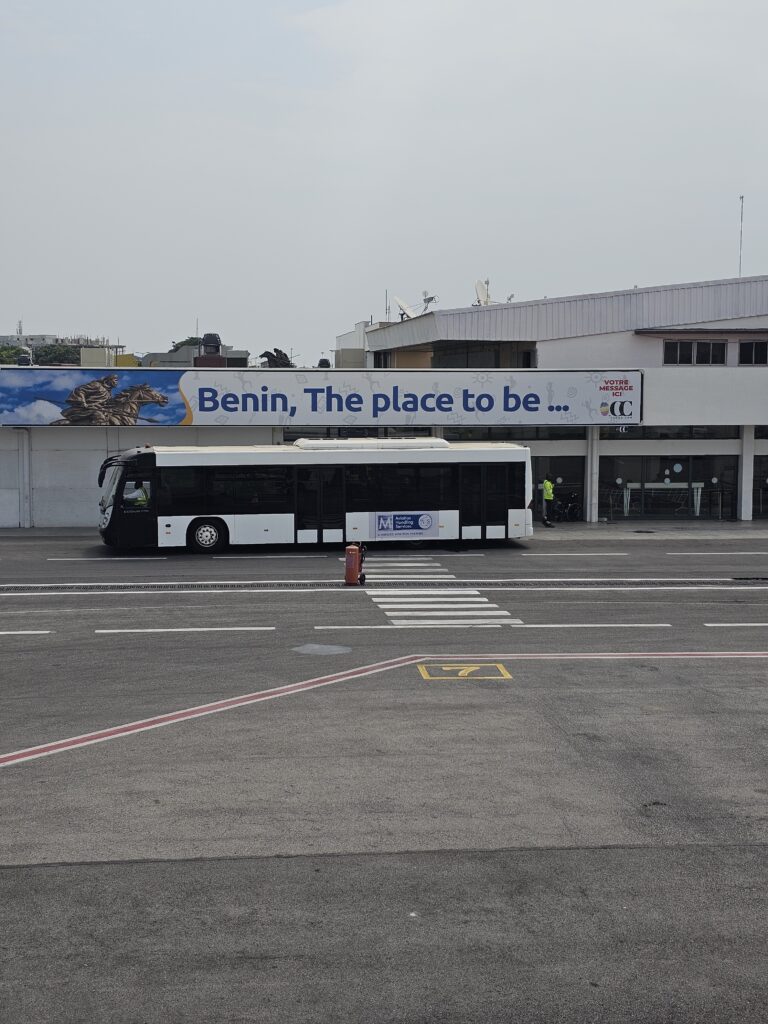
It wasn’t just the technology at the airport that positively surprised me. I was also quite impressed by how quickly I got the visa. Most travelers need an e-visa to enter Benin. The e-visa costs €50 and mine was approved in less than 10 minutes, which is an absolute record.
And since all good things come in threes… As I drove from the airport into the city, I saw roads of a quality that I have rarely seen in Africa before. The highway that leads from the airport into the city looks more modern than much of what I have seen in Europe so far. The best thing is that, according to my driver, the road was not built by the Chinese but by African companies.
My hotel was a place called L’imprévu. A hotel with a restaurant. Or rather the other way around. A restaurant (an excellent one by the way) with a few rooms. And it took less than 15 minutes to get there from the airport. I love it when airports are in the middle of a city.
I had two half days and one full day in Benin. It doesn’t sound like much, but in a small country like Benin you can do a lot in that amount of time. I spent the first afternoon in Cotonou and checked out the few attractions of the city. My first stop was the Place de l’Amazone. This square is home to the Monument Amazone, a 30-meter-high bronze statue of a female warrior.
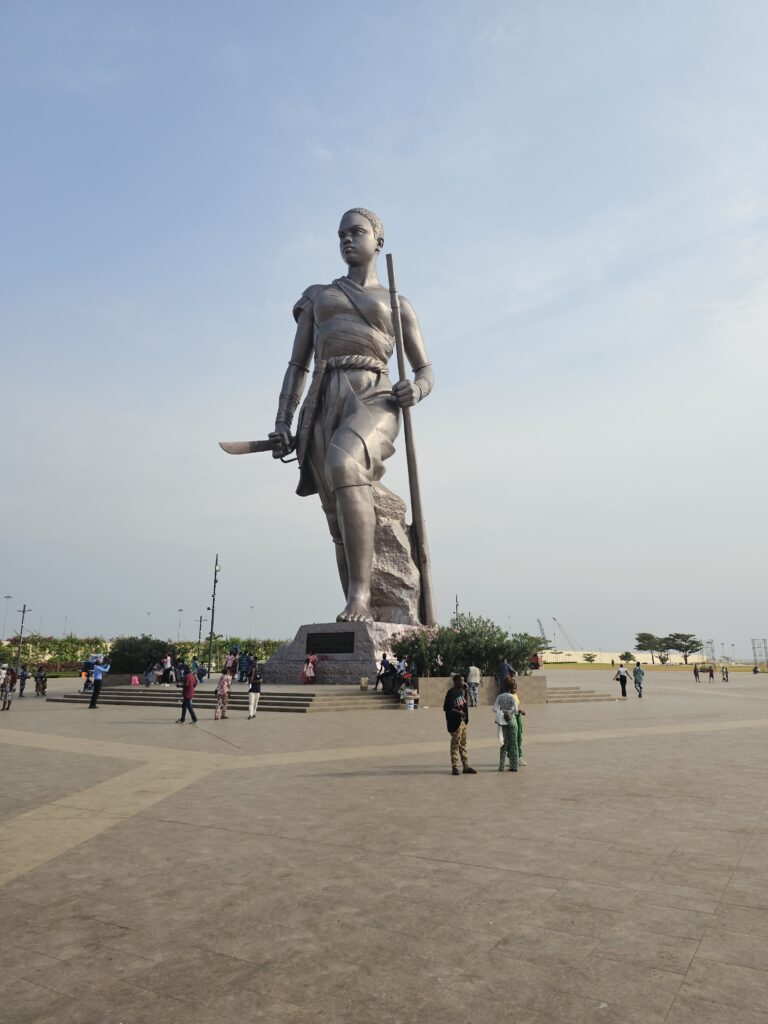
For me, such over-the-top sights are always a highlight. The Monument Amazone is not as high as the Monument de la Renaissance in Senegal’s capital Dakar (50 meters high) and it was not built by a North Korean company either but by a Chinese one. Nevertheless, the monument in Cotonou is just as cool as the one in Dakar. The government wanted to create a figure of identification for the people of Benin by the way.
I walked around Cotonou for about two hours and was left alone by the locals. And I mean that in a positive sense. In some African countries, you are often harassed on the street. Here in Cotonou, nobody seemed to care about me and I appreciated that. I was even able to take photos of the presidential palace without any problems. In most African countries, taking photos of government buildings can get you in serious trouble. Not in Benin.
The (almost) coolest place I found was Cotonou’s answer to Berlin’s Eastside Gallery. Right after the Plaza de l’Amazone, a wall starts that runs along the main street and shows one mural after the other. I estimate the wall is almost a kilometer long and the paintings were absolutely amazing.
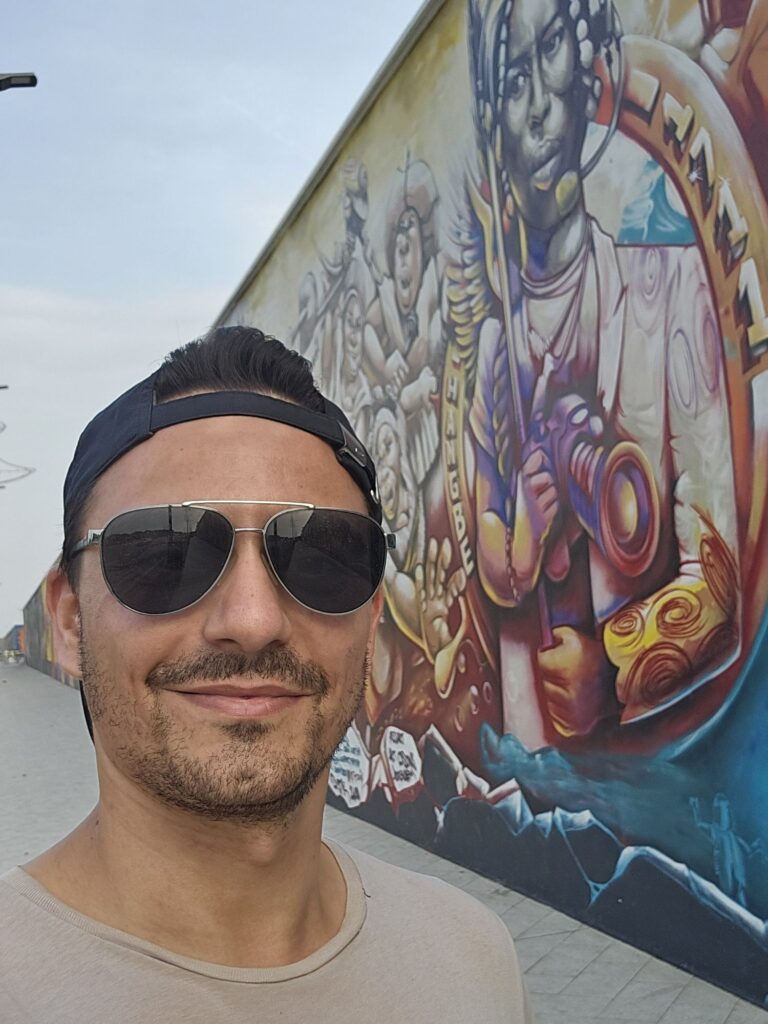
I walked the entire wall as my hotel was in that direction anyway. I kept stopping to look at the murals. The quality of these paintings was unbelievable and in the same league as murals found elsewhere in South America.
Before, I wrote that this is almost the coolest place. Why almost? Because the coolest was yet to come. Many tourists don’t even know about this attraction, but there is an airplane wreck on the beach in Cotonou. A Lockheed L-1011 TriStar to be precise. And you can even enter it.
Why is this plane there? The gentleman who sells the tickets there (you actually get a real ticket and the entrance fee is CFA 1,000, i.e. about €1.50) explained to me that the plane was no longer airworthy, but instead of getting rid of it, it was brought from the airport to the beach. The airport is only a few hundred meters away from this stretch of beach anyway. I’ve also read other stories online, for example that the plane crashed during take-off and was then dumped on the beach. But whatever the truth is, it’s definitely a damn cool attraction.
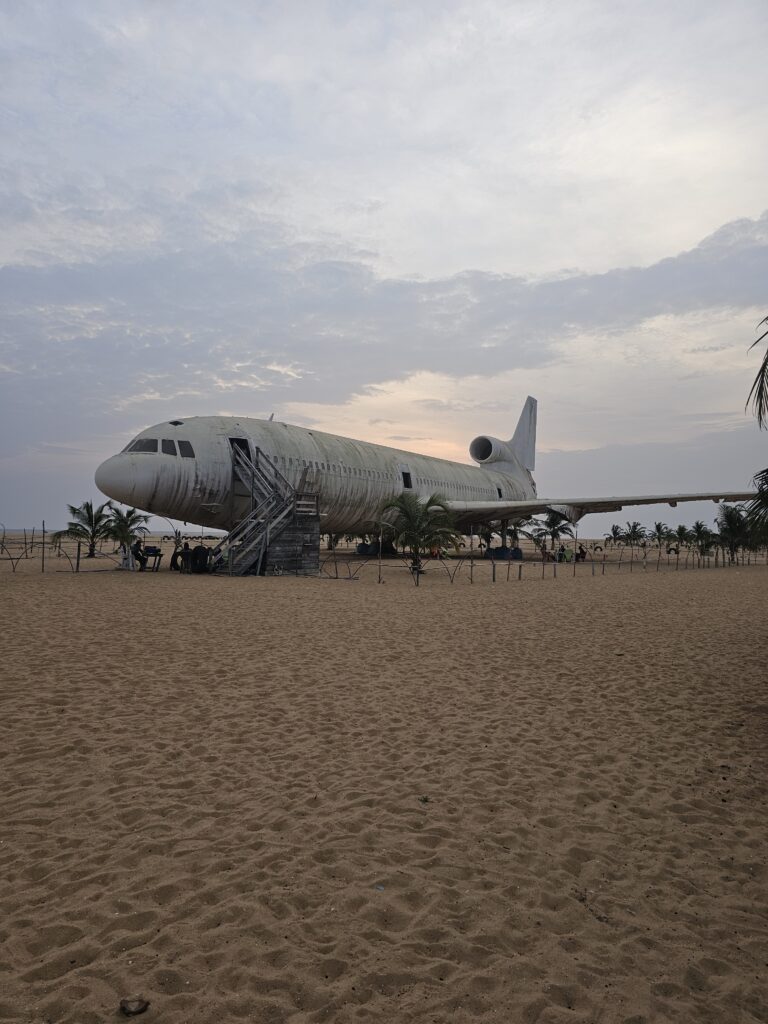
By the way, for whatever reason, filming is not allowed inside the aircraft. At least you can take photos and even sit in the cockpit. The fact that the plane is about to collapse is part of the experience. 🙂
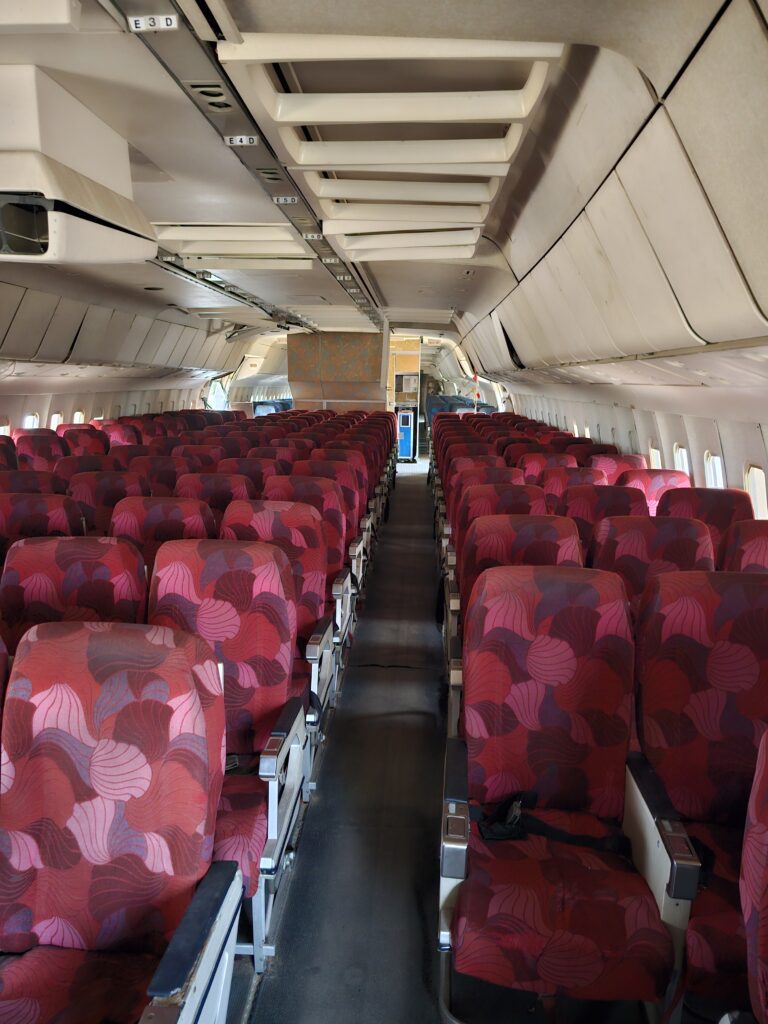
As many people don’t know where the plane is and you can’t see it on the drive from the airport to the city, I would like to share the location with you. You can find this place on GoogleMaps under the name “Aire de Jeux Mikeland”. Have fun.
The next day, I organized a driver and guide to take me to Ganvié and Ouidah. As I said, Benin is a very compact country and the journey from Cotonou to Ganvié took less than an hour. From Ganvié to Ouidah and from Ouidah back to Cotonou was about an hour each or a little less.
Ganvié is without doubt the biggest tourist attraction in Benin. It is a village within Lake Nakoué. Over 20,000 people live here in houses built on stilts in the lake and both locals and tourists navigate between the houses on gondolas. Sometimes Ganvié is also called the “Venice of Africa”. With a little wink, of course. 😉
A boat trip through Ganvié takes about an hour and you travel on the pirogue between the houses of the colorful village. The guide will explain what each building is. At the same time, other boats come towards you every few seconds, as this is the only method of transportation in this place.
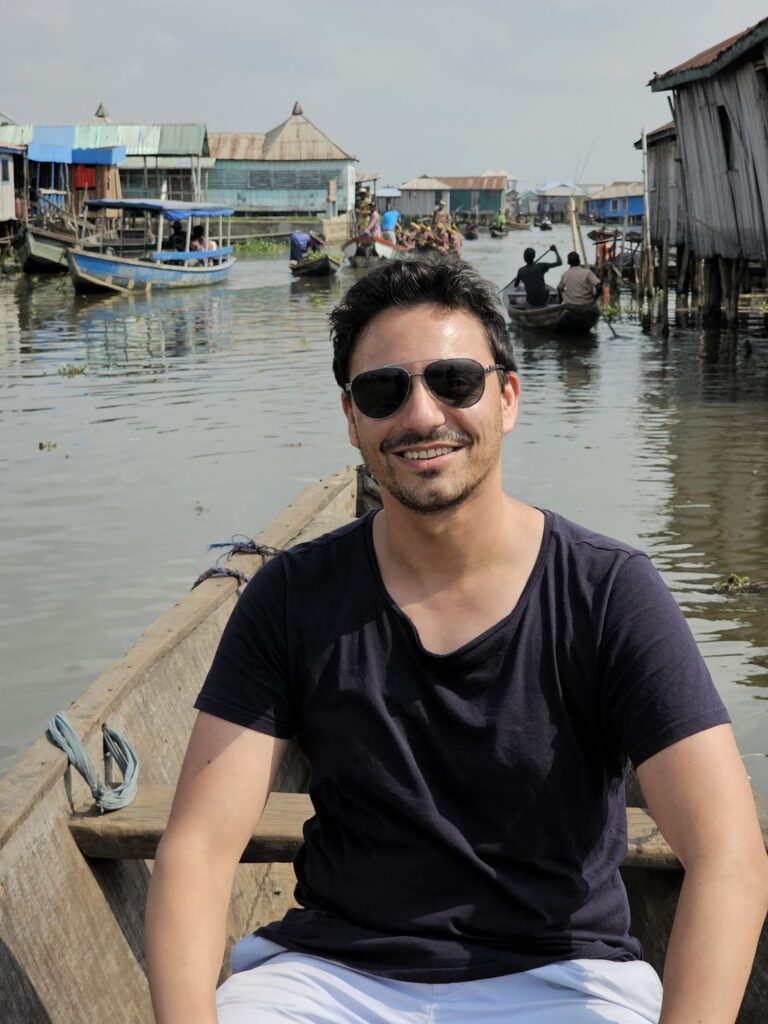
I have already visited such villages on water in other countries, but I have to say that Ganvié was the best and most interesting so far. Ganvié is full of life, it’s loud, it’s cheerful, you can hear music and pirogues with children come by calling “yovo” (it means “white”) after you. The people here are used to tourists and you can easily take photos or videos.
I would say that no trip to Benin is complete without a visit to Ganvié. For me, it was certainly another highlight in a country that had completely exceeded my expectations up to that point.
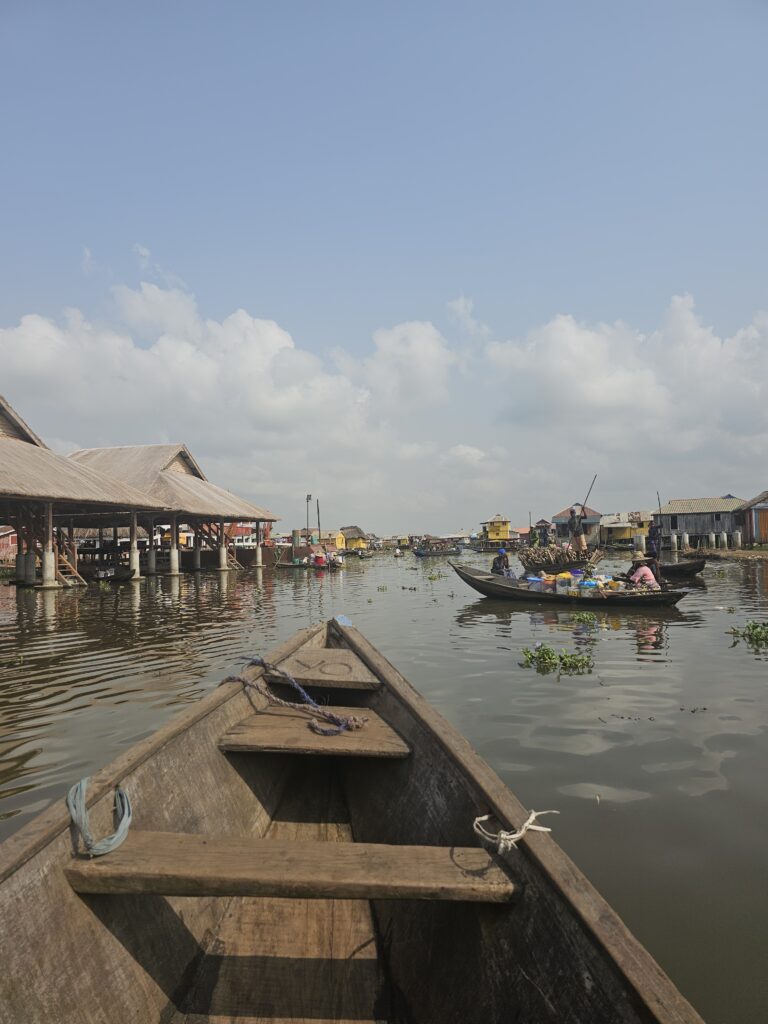
From Ganvié we then drove to Ouidah, the voodoo capital of the world, so to speak. Ouidah used to be the center of the slave trade in Benin, as the only port in the country was located there. Today you can still visit many historical sites in Ouidah that remind you of the dark days of the slave trade.
For many tourists, however, another attraction is the reason why they come to Ouidah: the Temple of Pythons. Around fifty pythons are kept here, and visitors can hang them around their neck and take a photo with them. Unlike some tourist hotspots where you can do the same, the snakes here are not drugged. They are considered sacred in this place.
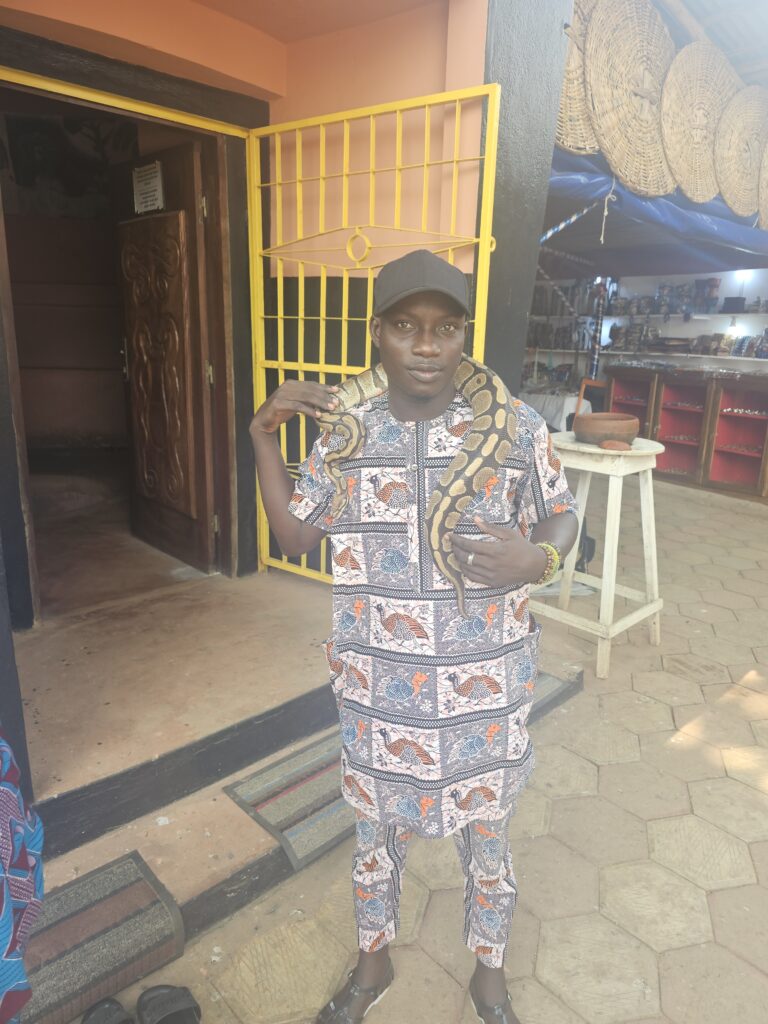
I didn’t really feel like hanging the snake around my neck, but I did touch a snake for the first time in my life. But overall, I found this place rather uninteresting and a bit of a tourist trap.
On the way back to Cotonou, we drove past the grounds where a big voodoo festival was taking place a few days later. Voodoo is a religion in this part of West Africa and has little to do with what people in the West think of as voodoo (dolls with needles stuck in them…). Many travelers come to Benin especially when this festival happens.
When I booked this trip, I had no idea that I was going to be in Benin just four days before the festival took place. However, I saw pictures afterwards and somehow it seemed a bit silly, like a European music festival that simply had voodoo as its theme. That’s why it’s totally fine that I missed it.
By the way, my day-trip to Ganvié and Ouidah can also easily be done as a DIY trip with a little research to save money. In the end, you only have to pay for transportation between the places. There are enough boat drivers in Ganvié to take you around and you don’t need a guide for the Python Temple in Ouidah. But if you want a guide and driver for convenience reasons like I do, I can recommend Kader (Whatsapp: +22996502923).
The next day, it was already time to leave Benin. However, as my flight wasn’t until 4 p.m., I still had enough time to see more of the country. A guide who also worked for my hotel convinced me to use the morning to drive to the capital city Porto Novo. As his price was reasonable (CFA 40,000, about €60) and I had nothing else better to do, I agreed.
It only takes an hour from Cotonou to Porto Novo (the standard time in Benin to get from A to B). But I could have done without the journey, because Porto Novo wasn’t particularly exciting. I liked the Great Mosque, which looks more like a Catholic church. Apart from that, I didn’t find the city interesting. I also found the palace tour, one of Porto Novo’s main attractions, a bit boring.
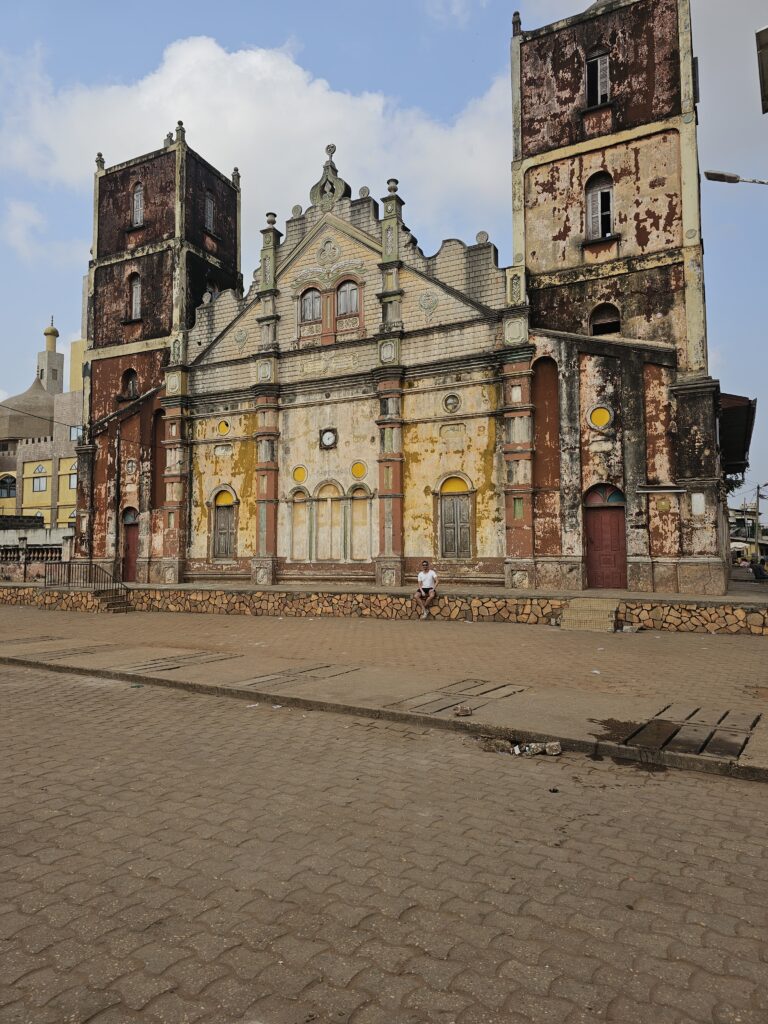
My guide had actually promised me a boat trip on the Black River Adjarra. We suddenly didn’t have time for that, although my guide always said that we would manage everything. But seriously… so what. I had the Ganvié boat tour the day before. I had also been on a boat trip in Cameroon three days earlier. It wasn’t a big deal to have missed this one.
Is Porto Novo worth a visit? Without the Black River, I would say not really. I mean, if you have plenty of time, then why not. But otherwise, I think you will not miss a lot if you skip it.
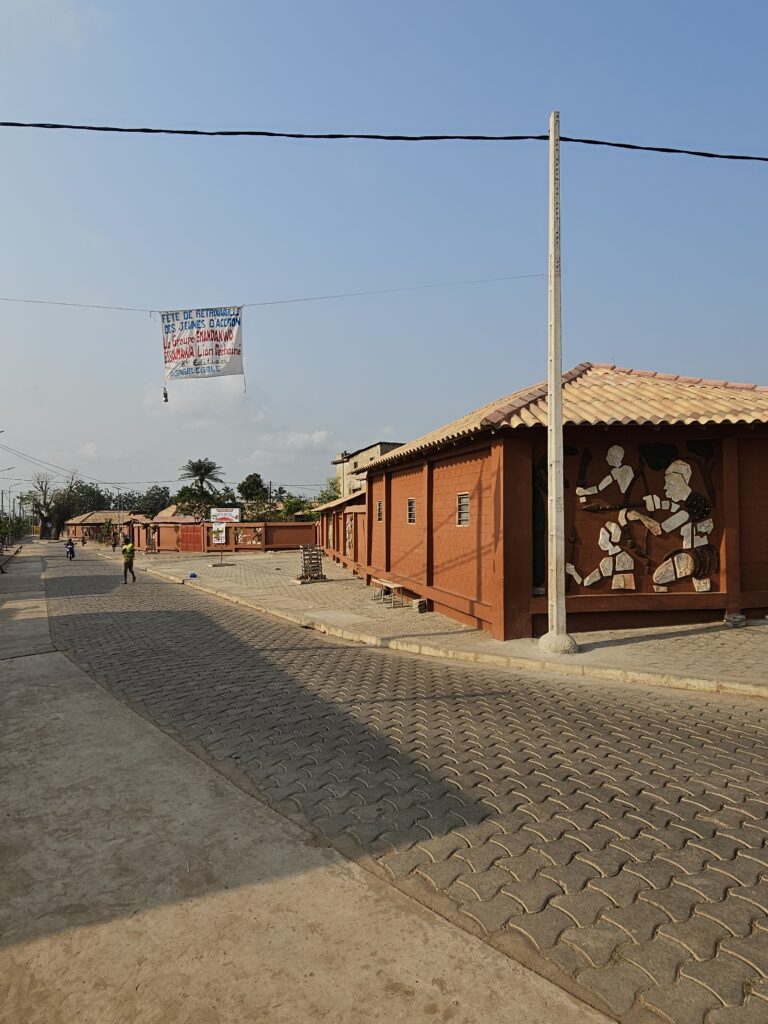
A little later I left Benin, and what can I say? The country thrilled me! I assumed that Benin would be similar to Togo. In other words, a country that’s okay, but nothing more. I was wrong. Benin was a really great country and for me the best in West Africa so far.
What I appreciated most was how modern Benin was compared to other African countries. I also thought Cotonou was a really cool city with three awesome attractions: the Monument Amazone, the wall full of murals and the airplane on the beach. Ganvié was also an exciting place and even with Ouidah and Porto Novo, I have to say that while neither city blew me away, it didn’t hurt to see them either.
Would I visit Benin a second time? Yes, why not. Not because I feel that I missed out on something the first time, but I simply liked the country. Besides, I can now tell people who are about to make their first trip to West Africa that they can look forward to this small but beautiful country.
After the Central African Republic and Cameroon, two countries I didn’t enjoy that much, Benin was the best country on this trip so far. And it would probably stay that way. My journey took me to the last country on this trip. To the country I dreaded the most of all. The country in the armpit of Africa called Equatorial Guinea…
Click here to find the trip reports of the 170+ other countries I have visited so far!
